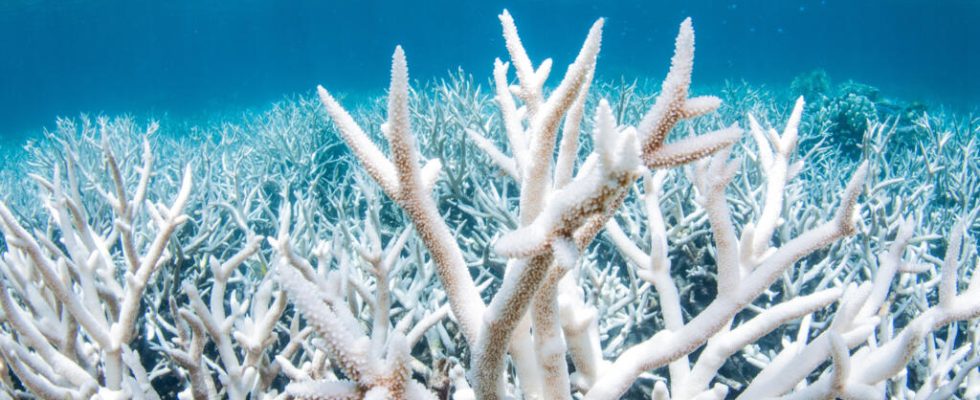The world is currently experiencing, for the second time in ten years, a massive episode of coral bleaching due to record ocean temperatures, the American Oceanic and Atmospheric Observing Agency (NOAA) warned on April 15, 2024. This decline phenomenon threatens the survival of coral reefs around the world, including off the coast of Madagascar. Details.
3 mins
This is one of the very visible manifestations of climate change in the oceans: coral bleaching. A global and widespread phenomenon, caused by El Niño and observed over the past year to varying degrees, in the Atlantic, Pacific and Indian Ocean.
This is what NOAA, the American National Oceanic and Atmospheric Administration, has just highlighted in its report on the conservation of coral reefs. A global phenomenon – the second in eight years – which does not spare Madagascar. The Big Island and its region are currently experiencing a peak in bleaching.
48% of corals affected, according to sampling in the south of the country
Coral bleaching is the result of stress caused to these marine animals. The rise in global ocean surface temperature, which has reached a record level since the beginning of 2023, is today the main factor in this stress. Spread over 5,000 kilometers of coastline, Malagasy corals pay a heavy price, explains Mahery Randrianarivo, marine biologist at WWF: “ We have just returned from a mission to the south of the country where we went to see the severity and extent of coral bleaching. We sampled the reefs along 250 km of coastline south of Tuléar. It was found that 48% of corals are affected and impacted by bleaching. And naturally, we already know that the situation is more serious in the north of the country, on the reefs around Nosy Be. »
The reason is that the waters are indeed warmer there. The reefs located around the Mozambique Channel – like those of the Comoros or Mayotte – are more affected than those on the east coast of Madagascar, where the currents allow better mixing of the ocean.
“ The fewer corals there are, the fewer fish there are »
“ In terms of impact », continues the marine expert, “ we cannot say that the most bleached reefs will be the ones that will degrade the most. Some manage to recover. But if the phenomenon continues for too long, more than 3 weeks, and if the reef is subject to human disturbance, then the corals will have difficulty recovering and will die. “.
And this planned disappearance has multiple consequences, both in the oceans and on the surface. “ Corals are the key engineers of the ecosystemimage Mahery Randrianarivo. The more corals there are, the more life there is. So the fewer corals there are, the fewer fish there are, which has a direct impact on coastal communities in terms of food and sources of income. “.
The last global bleaching event in 2016 caused the permanent loss of almost a third of the coral cover in the Indian Ocean region.
Read alsoAustralia: the Great Barrier Reef suffers the worst bleaching episode ever observed
